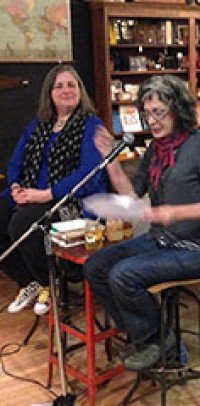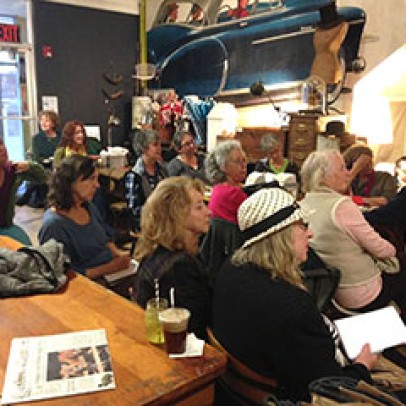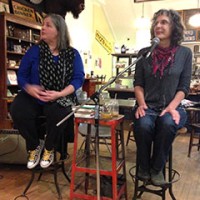BEVERLY DONOFRIO‘s first memoir, Riding in Cars with Boys, has been translated into sixteen languages and transformed into a popular motion picture. Her second memoir, Looking for Mary (or, the Blessed Mother and Me), began as a documentary on NPR and was chosen as a Discover Book at Barnes & Noble. She is the author of two picture books illustrated by Barbara McClintock, and a book for middle-graders. Beverly is an award–winning radio documentarian and essayist and can be heard on All Things Considered. Her personal essays have appeared in the New York Times, Washington Post, Los Angeles Times, Allure, Cosmopolitan, New York Magazine, The Village Voice, O, Marie Claire, and Spirituality & Health. She lived for four years as a lay Carmelite at Nada Hermitage in Colorado, where she began her new memoir, Astonished, published by Viking in 2013. Beverly lives in Woodstock, and teaches at the low residency MFA program at Wilkes University.
Read Nina Shengold’s Chronogram profile.
“The Telling Detail” 9/25/14 – The Exercises
Beverly Donofrio delighted the Word Café crowd by reading an exuberant new piece called “Anthem” which she’d just written in a TMI workshop.
Our subject was “The Telling Detail,” and we talked the way in which a carefully chosen detail can paint the whole picture.
Bev said that though many writers spill out a lot in the first draft and then cut, she tends to write short and then fill in more and more detail. But rewriting can also be a winnowing process. She described a short chapter in Astonished about a bunny, which started out with a lot of step by step detail. Something about it didn’t feel right, and she set it aside for awhile. (Her process includes a lot of stopping, walking away to do other things, and starting again–what she cheerfully called “ADD.”) When she reread it, she realized the story she wanted to tell began midway through her draft, and cut nearly half of the chapter.
Asked if there’s such a thing as too much detail, Bev asserted that if you’re really passionate about something and every detail excites you, the reader will share your excitement.
She also said that the most important thing about writing memoir is “being absolutely and completely who you are.” Writing “is not therapy, but it is therapeutic,” and telling the truth about difficult things is cathartic.
Here are the writing prompts we gave in class, all of which inspired wonderful work from participants:
- Bev read a short passage from Margaux Fragoso’s memoir Tiger, Tiger written in third person sentences which all begin, “Picture a girl who…” Write a series of sentences beginning with “Picture a girl (or boy) who…,” revealing how you became something you still are today.
- Write about a moment when everything changed, an event that divided your life into a “before” and “after.” (Bev)
- Nina’s exercise borrowed a two-step process from Mark Wunderlich’s word-list poems. Describe a significant room from your past in as much detail as possible: list everything in it, sounds, smells, textures. Then go back over this list and circle three details that gave the room its characteristic feel and atmosphere.


